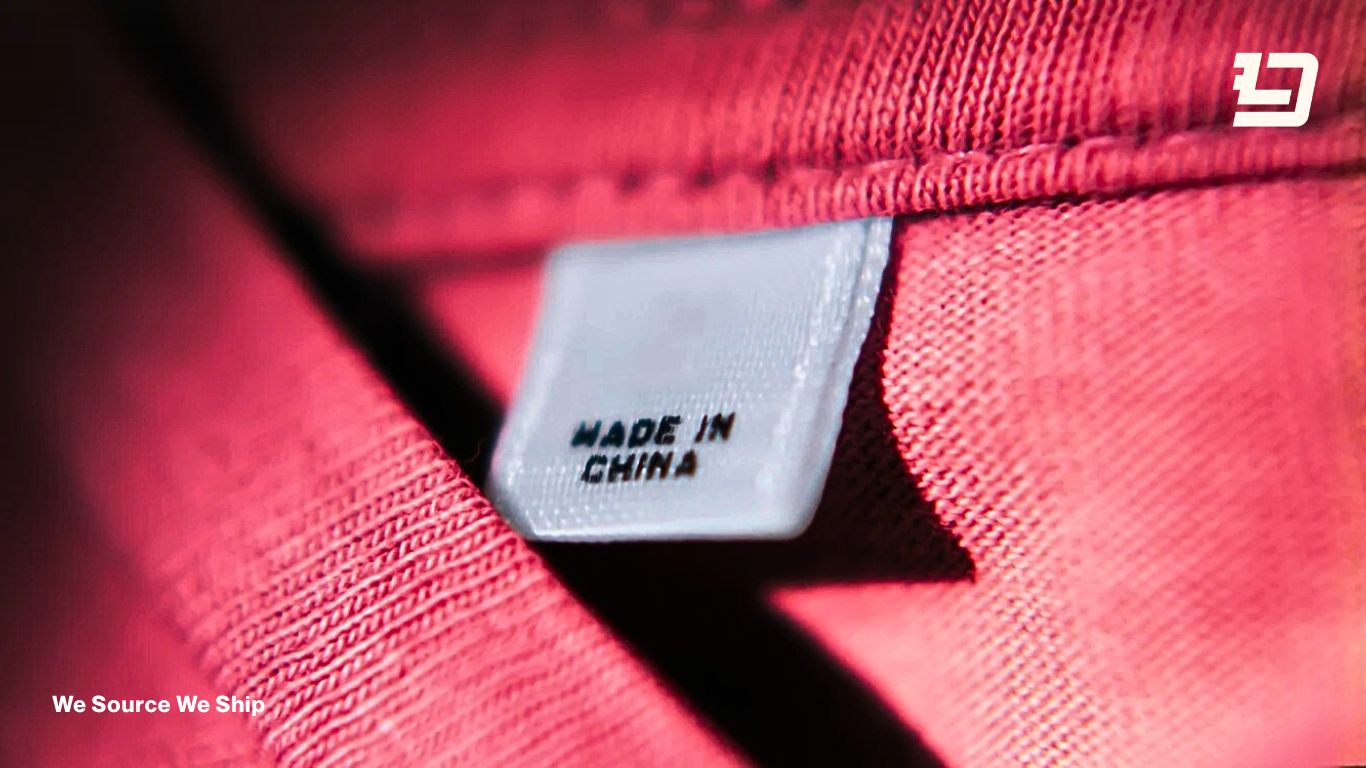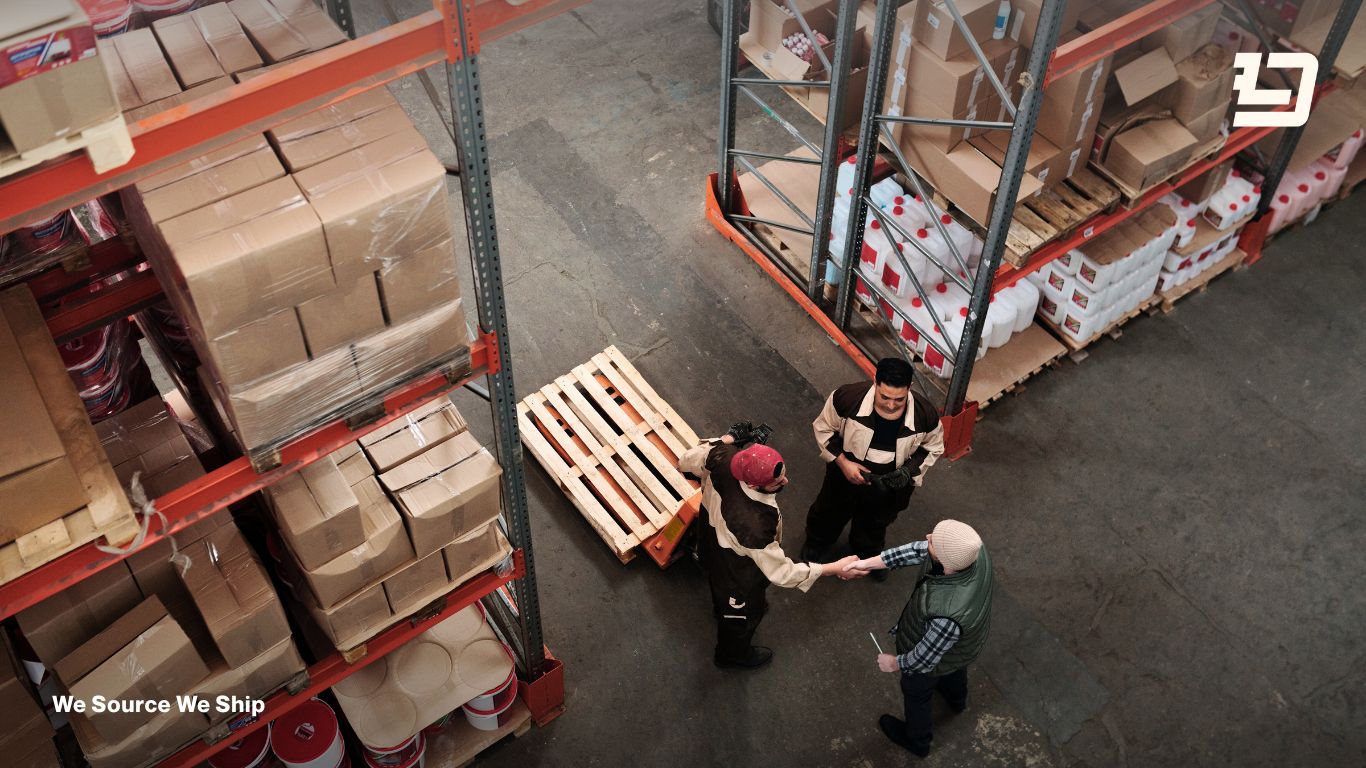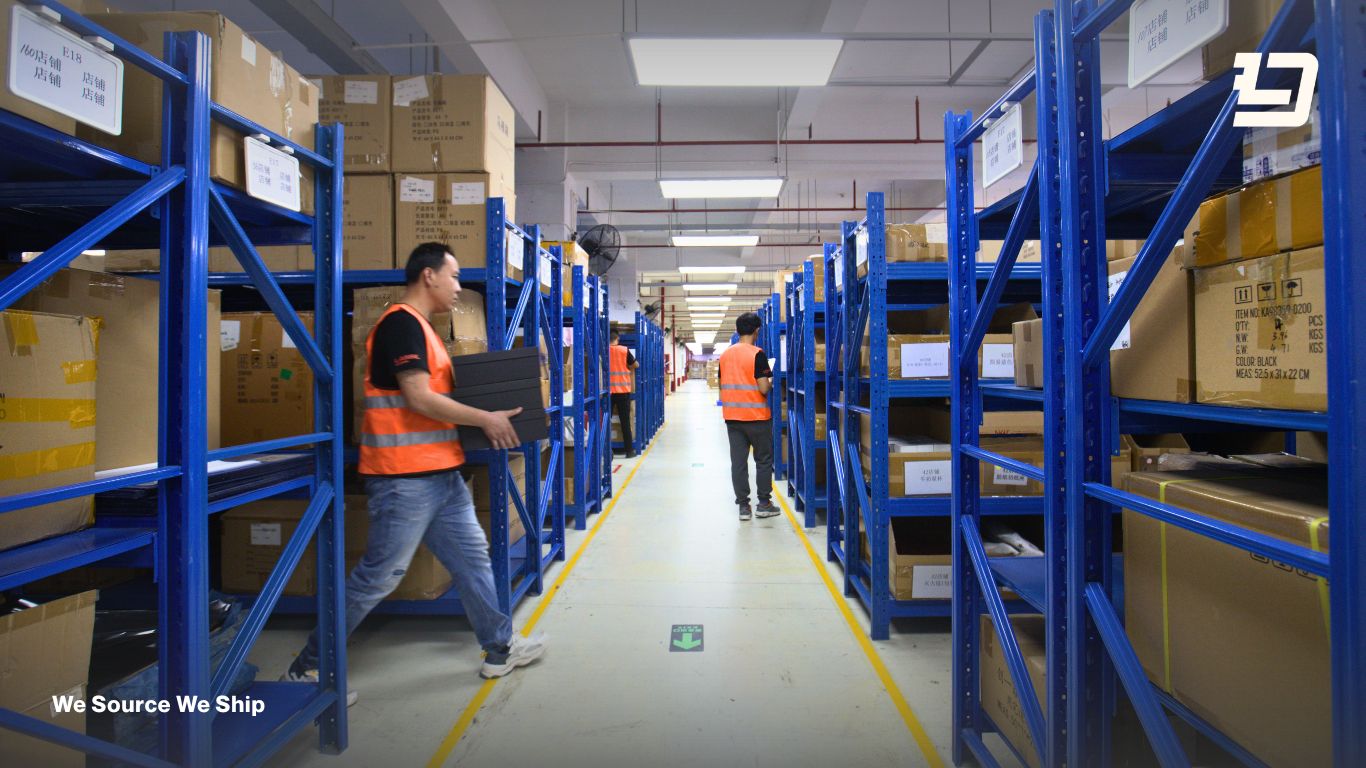In 2024, over 1.36 billion shipments entered the U.S. under the de minimis rule. This allowed imports under $800 to clear without duties or taxes. These shipments made up more than $64.6 billion in cross-border ecommerce, mostly from Chinese sellers shipping directly to U.S. consumers.
But starting August 29, 2025, that rule will be gone. No more duty-free ecommerce shipments under $800. And it will not just apply to China. The exemption ends globally.
For ecommerce brands shipping DDP from China or using postal services, this is a game-changer. Duties will apply per shipment. Customs clearance will take longer. Customers may face surprise costs. Brands that do not adapt will bleed margin or worse, lose customers.
The good news? Yes, U.S. warehouses can help you avoid these problems. Here’s how.
What Was De Minimis?
The de minimis exemption allowed low-value packages (under $800) to enter the U.S. without duties, taxes, or heavy customs checks. It created a huge advantage for:
- Chinese DTC sellers using postal or courier services
- Dropshippers importing one parcel per order
- Ecommerce brands using DDP fulfillment models
However, U.S. lawmakers raised concerns. The exemption was widely used to undercut domestic sellers, evade duties, and flood the market with unregulated goods.
This led to a phased repeal:
- May 2, 2025: China and Hong Kong were removed from de minimis eligibility
- August 29, 2025: The global repeal goes into effect, ending the exemption for all countries
The New Reality for Ecommerce
Once the rule ends, brands will face:
- Per-shipment duties on low-value orders
- Customs delays and documentation checks
- No more tax-free DDP from China
- Higher fulfillment costs for direct-to-consumer imports
- Loss of customer trust due to unexpected delivery fees or customs letters
For brands that relied on shipping orders one by one from China, that model is no longer viable.
What’s the Alternative?
Two proven strategies are gaining traction:
1. U.S. Warehousing and Fulfillment
Import your inventory in bulk, clear duties once, and fulfill from within the U.S.
2. Foreign Trade Zones (FTZs)
Store goods in duty-free U.S. zones. Only pay duties when items are sold or delivered to U.S. customers.
Both models solve the same problem. They eliminate per-order duties and give you full control over landed costs and shipping speed.
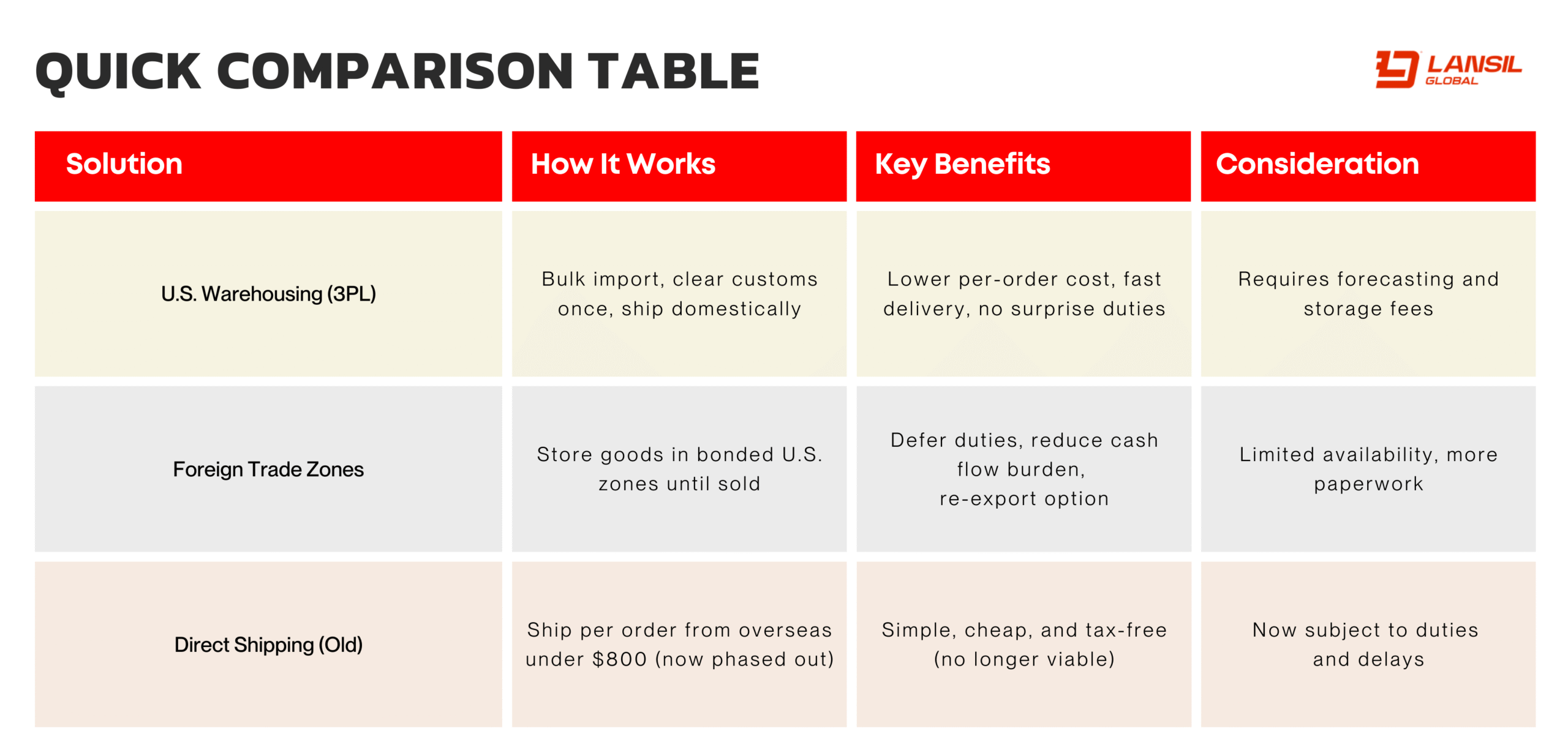
How U.S. Warehouses Work
Let’s say you ship 1,000 units of your product from China:
- You consolidate the shipment using sea freight or air freight
- It arrives at a U.S. port and clears customs once
- You store it in a domestic 3PL warehouse
- Customer orders are fulfilled locally, typically within 2 to 4 days
There are no additional duties per order, and customers receive their packages faster with no customs surprises. You move from reactive to proactive.
Why FTZs Are Gaining Ground
Foreign Trade Zones offer another layer of flexibility. Brands using FTZs can:
- Delay duty payments until items are sold
- Avoid duties on unsold inventory that is returned or exported
- Consolidate customs filings to reduce admin and compliance costs
FTZ usage has increased since the repeal was announced. Beauty, electronics, and fashion brands are leading adopters, especially those with seasonal or international demand.
The Lansil Global Advantage
Lansil Global helps ecommerce brands adapt with U.S.-based fulfillment that makes sense in a post–de minimis world. Our operations let you import smarter, fulfill faster, and stay compliant.
Our Warehouse Network
Pennsylvania (East Coast)
Covers the Northeast and Midwest with fast 2 to 4 day delivery. Close to major ports, Amazon FCs, and parcel hubs. Great for FBA prep and returns.
Nevada (West Coast)
Offers fast West Coast coverage and lower container delivery costs from Asia. Ideal for high-volume DTC brands.
You can import your goods once, store them strategically, and let Lansil handle fulfillment from coast to coast. No per-order duties, no customs delays, and full customer satisfaction.
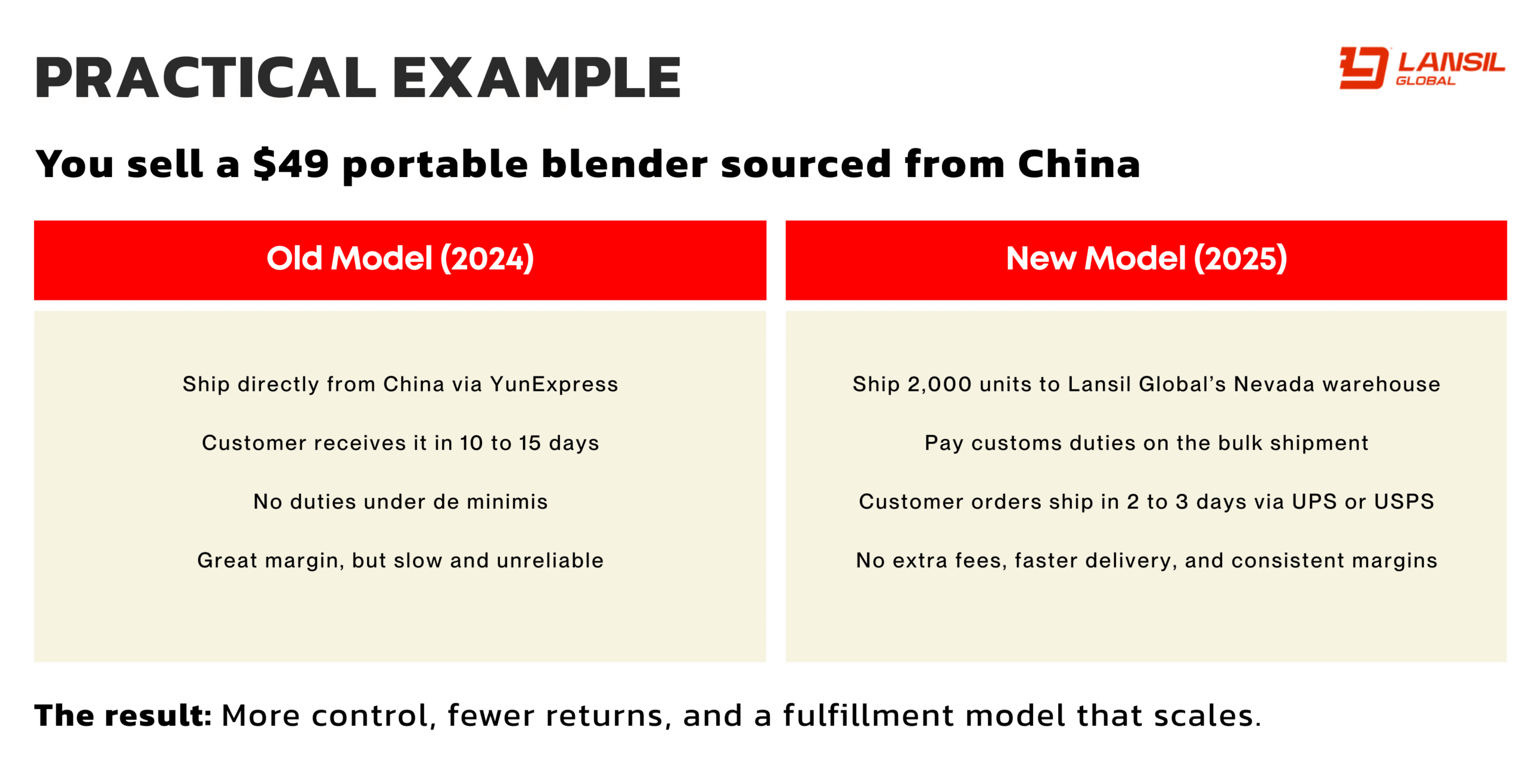
The end of the de minimis exemption is a major shift for ecommerce sellers. But it is also an opportunity to build a better logistics model. Brands that move to U.S. warehousing or FTZs will gain long-term control, faster shipping, and fewer surprises.
Lansil Global helps ecommerce brands turn this disruption into an advantage. With full-service fulfillment, U.S. coverage on both coasts, and support from factory to doorstep, we help you stay competitive and compliant.
Ready to protect your margins and streamline your operations? Contact Lansil Global to explore U.S. warehousing built for ecommerce in 2025.



